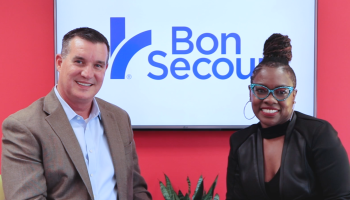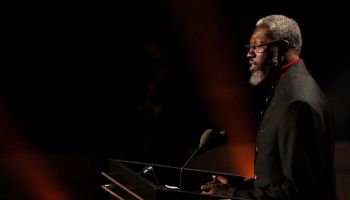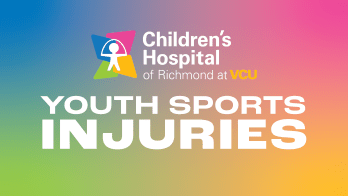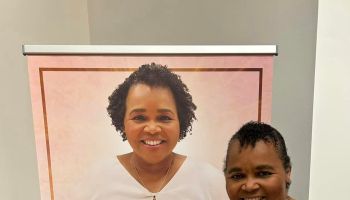Watch the interview with Miss Community Clovia & Dr. Stacey Epps, Executive Bon Secours Neuroscience Institute and President-Elect for the American Heart Association’s Richmond Metro Board.
When Stroke Strikes, Seconds Count. Know Your Risks.
Every 40 seconds, someone suffers a stroke in the United States.
Bon Secours, the only non-academic facility to earn the highest level of stroke care certification in Virginia as a Joint Commission Comprehensive Stroke Center, defines a stroke as “when blood supply to the brain is blocked by a blood clot or when an aneurysm—a weakened area of a blood vessel that ‘balloons’ over time—ruptures and causes bleeding in the brain. Both conditions reduce the brain’s oxygen supply, causing cells to die.”
Stroke is the leading cause of long-term disability and the fifth-leading cause of death in the U.S., but did you know that the National Stroke Association says that up to 80 percent of strokes are preventable?
There are steps that you can take to reduce your risk of stroke, but first let’s review the signs of a stroke. The quicker that someone is treated for a stroke, the better their recovery process can be.
Just remember, BE FAST.
B = Balance – Is the person experiencing a sudden loss of balance or coordination?
E = Eyes – Is the person having a sudden change in vision or trouble seeing?
F = Face Drooping – Look at the person’s face. Does one side of their face droop? Ask them to smile. Is the smile lopsided?
A = Arm Weakness – Is an arm weak or numb? Ask the person to raise their arms. Does one arm drift down?
S = Speech Difficulty – Is the person’s speech slurred? Ask the person to repeat a short phrase. “The silly dog is nice.” Are they slurring their words or completely unable to repeat the sentence.
T = Time to Call 911! – If a person shows any of these signs, call 911 immediately. Call even if the symptoms appear to go away. Tell emergency responders that you believe the person is having a stroke and note the time that symptoms first occurred.
BE FAST and you could help save someone’s life.
Before a stroke strikes, become familiar with the factors that may put you at a higher risk for stroke. There are a number of risks that can be managed by altering lifestyle habits and some that cannot. These risks include high blood pressure, diabetes, heart diseases including atrial fibrillation, sleep apnea, age, gender, or a family history of stroke. Race and ethnicity are also factors to consider. Stroke data indicate that African Americans are at a higher risk for stroke than others.
Lifestyle changes can go a long way toward the prevention of a stroke. The National Stroke Association says there are ways to manage your risk outside of the doctor’s office and suggests the following.
- Stop Smoking—Smoking accelerates clot formation, thickens blood, and increases the amount of plaque buildup in the arteries.
- Adopt a Healthy Diet—Try to eat plenty of fruits and vegetables, along with foods that are high in fiber. Limiting salt can help lower your blood pressure. Eating less cholesterol and fat, especially saturated fat and trans fats, may reduce the plaque in arteries.
- Maintain a Healthy Weight—Carrying extra weight can make you more apt to develop high blood pressure, heart problems, and diabetes—which can all increase the risk for stroke.
- Be Active—Physical activity can help you lose weight and reduce stress—which can lower blood pressure.
- Drink Less—Drinking too much alcohol can increase blood pressure and the risk of stroke.
Should you experience a stroke, there are experts ready to help. At Bon Secours Neuroscience Institute, physicians are standing by to treat blood clot–related strokes by administering clot-busting medications and with advanced neuroendovascular procedures that mechanically remove a clot from a blood vessel in the brain. Additionally, Bon Secours can treat an aneurysm-related stroke with neurointerventional surgery.
Inside St. Mary’s Hospital specifically, the latest stroke technology is used to perform rapid evaluation, diagnosis, and treatment of acute stroke patients.
- Point-of-care testing in the Emergency Department to provide lab results and imaging in minutes.
- A 28-bed Neuroscience Telemetry Unit and Neuroscience Step-down Unit, with exclusively private rooms.
- State-of-the-art, 64-slice CT scanner adjoining the Emergency Department for ultra-fast head imaging.
- Bi-plane interventional imaging system for cerebral angiography, delivery of intra-arterial thrombolytics, and use of the MERCI ischemic stroke clot-removal system.
Remember, if you identify a friend, loved one, or perfect stranger showing signs of a stroke, BE FAST. You may just save a life.
Find out more at www.bonsecours.com.

















